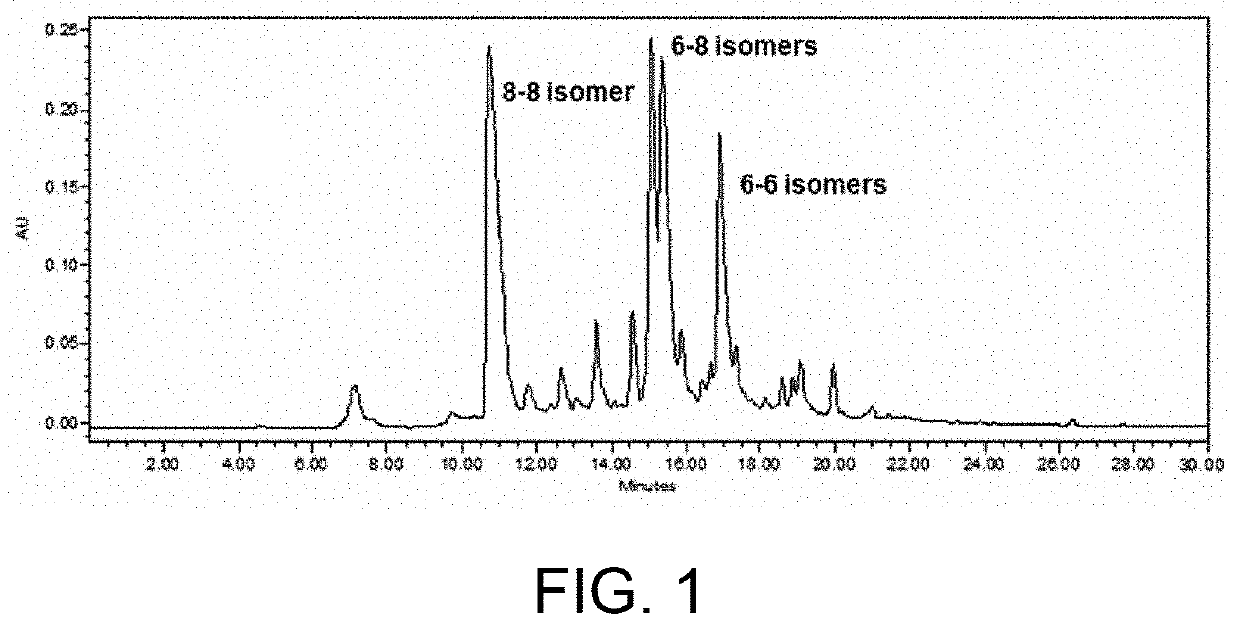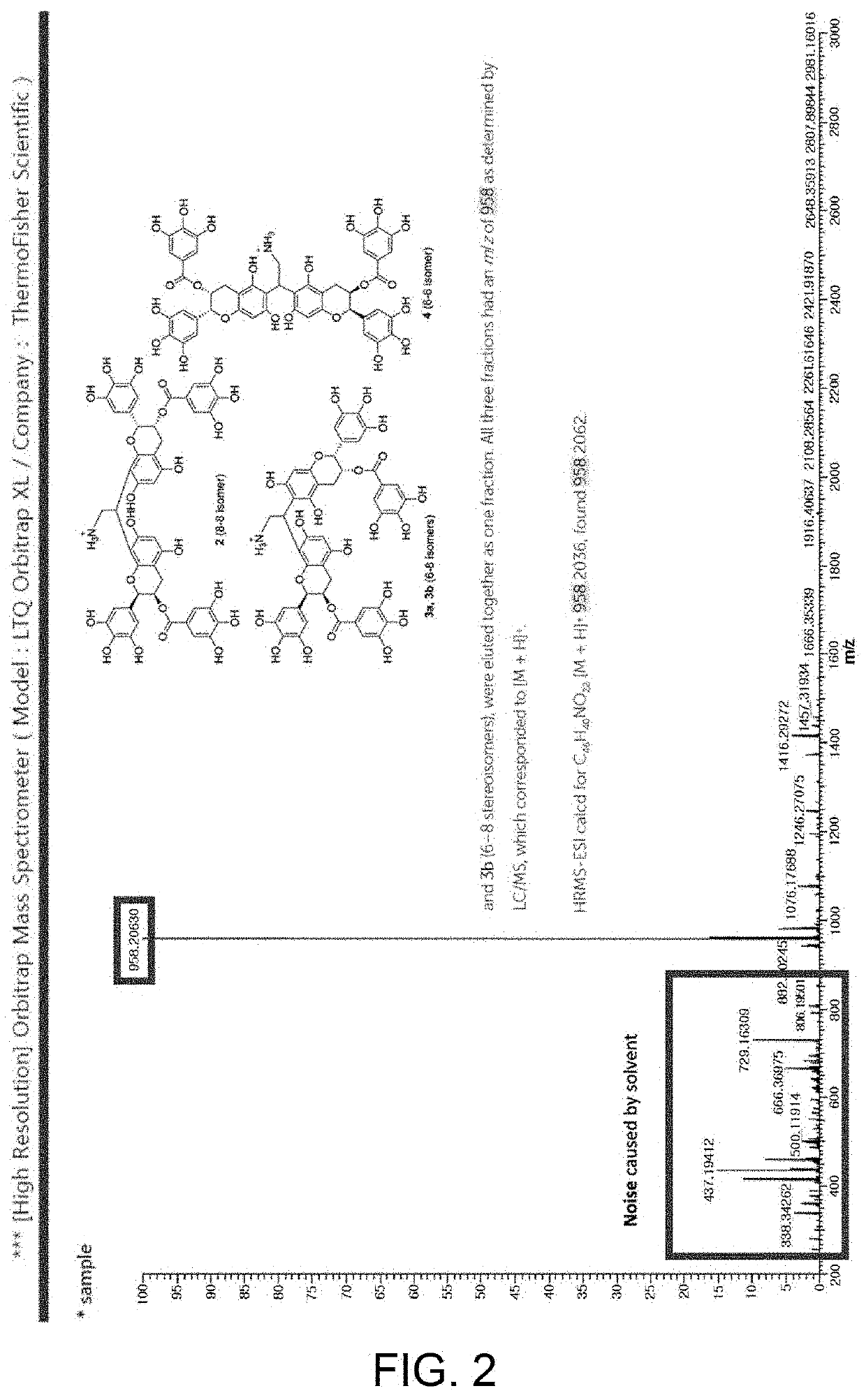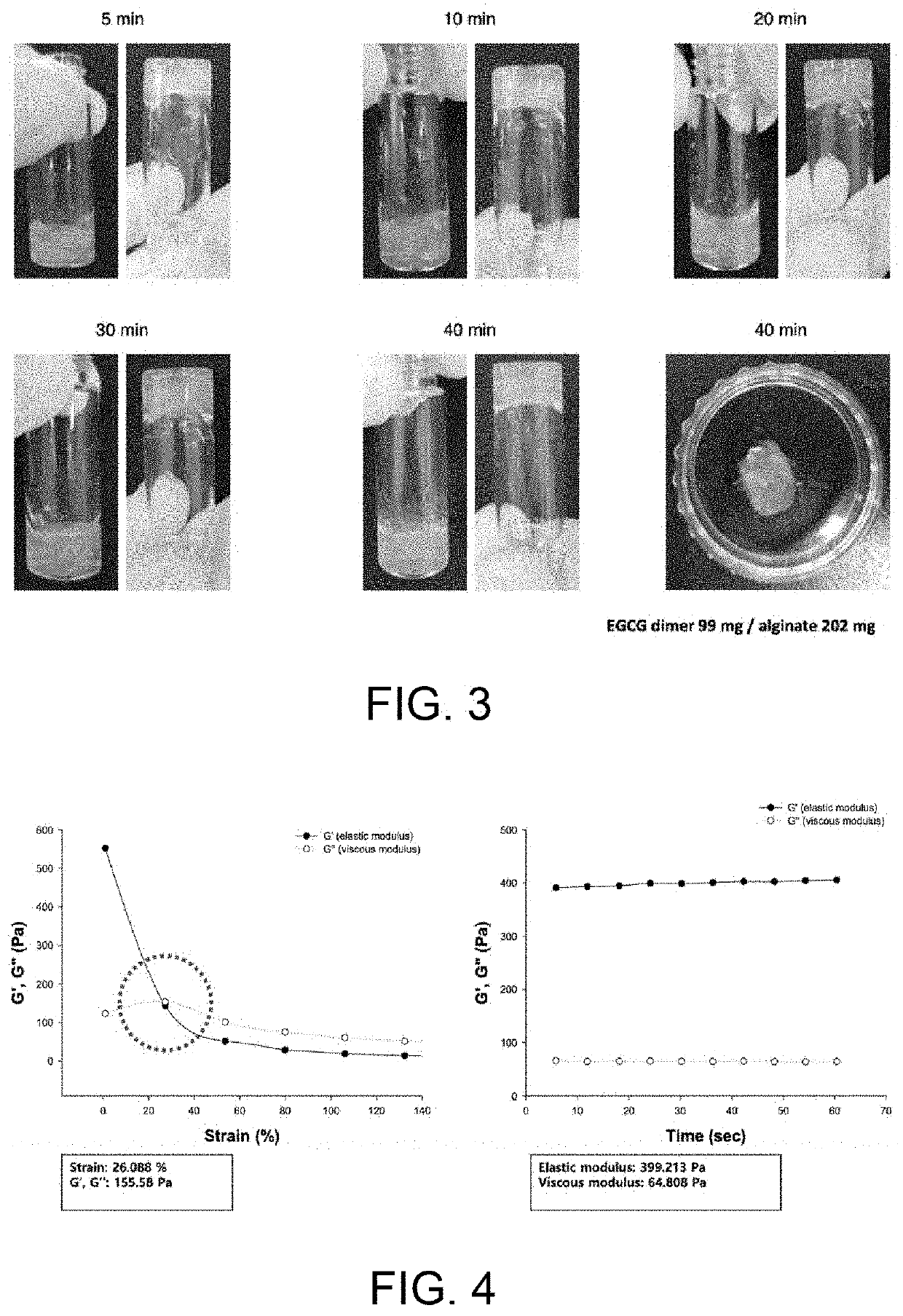Alginate microcapsules for cell encapsulation and, manufacturing method therefor
a technology of alginate hydrogel and cell encapsulation, which is applied in the direction of microcapsules, coatings, prostheses, etc., can solve the problems of xenogeneic transplantation, shorten the life of the microcapsule, and the melting of the alginate hydrogel used for encapsulation, so as to achieve easy decomposition, improve cell viability, and facilitate delivery
- Summary
- Abstract
- Description
- Claims
- Application Information
AI Technical Summary
Benefits of technology
Problems solved by technology
Method used
Image
Examples
synthesis example 1
allocatechin Gallate (EGCG) Dimer
[0092]2,2-diethoxyethylamine (DA) exists as an aldehyde in an acidic environment. EGCG dimer was prepared by reacting epigallocatechin gallate (EGCG) and DA in methanesulfonic acid (MSA) to allow aldehyde mediated polymerization.
[0093]Specifically, 3.8 ml of tetrahydrofuran and 7 μl of methanesulfonic acid were mixed in a 10 ml vial, then 2.29 g (5 mmol) of EGCG was added under dark condition and nitrogen atmosphere, followed by stirring for 1 to 2 hours. Next, Then, 145 μl of 2,2-diethoxyethylamine was added to a mixed solvent of 1 ml of tetrahydrofuran and 0.2 ml of methanesulfonic acid in a cooled-down 10 ml vial, followed by stirring for 20 to 30 minutes, such that an ethoxy group was removed from 2,2-diethoxyethylamine and aldehyde group was exposed. A solution of 2,2-diethoxyethylamine from which the ethoxy group had been removed was slowly added dropwise to the previously prepared EGCG solution and reacted overnight under dark condition at roo...
synthesis example 2
nate-EGCG Conjugate
[0096]The EGCG dimer was conjugated to a polymer having a carboxylic acid group using a carbodiimide-mediated coupling reaction according to Scheme 2. Alginate reacted with EGCG dimer overnight at the acidic condition (pH 4.7) in the presence of N-hydroxysuccinimide (NHS), and N-(3-dimethylaminopropyl)-N′-ethylcarbodiimide (EDC) such that the amine group of EGCG and the carboxylic acid of HA were amide-bonded to prepare an alginate-EGCG conjugate.
[0097]Specifically, under dark room condition, 202 mg of alginate was added to a mixed solution of 20.2 ml of 0.4 M MES buffer (pH 5.2) and 2.5 ml of N,N-dimethylformamide (DMF) in three-necked flask, followed by stirring. When the alginate was completely dissolved, the inside of the flask was replaced with nitrogen atmosphere and the flask was sealed. After dissolving 89 mg (0.78 mmol) of NHS in 3 ml of 0.4 M MES buffer (pH 5.2) to form a mixture, it was added to the flask using a syringe. After dissolving 4 mg (0.082 mo...
synthesis example 3
imer
[0100]EGCG may be denatured in two main manners: oxidation and epimerization. A pattern and rate of the denaturation depend on several conditions such as the concentration of EGCG, pH, temperature, and partial pressure of oxygen. When EGCG is present at a micromolar concentration level, oxidation proceeds rapidly. When EGCG is present at a millimolar concentration level, EGCG molecules inhibit oxidation with each other, thereby lowering the oxidation rate. Further, under weakly acidic condition of pH 2 to 5.5, EGCG oxidation is suppressed but the epimerization proceeds. The EGCG oxidation proceeds rapidly under strong acid or basic conditions. Epimerization of EGCG occurs at a temperature of 50° C. or higher, but oxidation proceeds at a lower temperature than 50° C. In particular, it was identified that EGCG denaturation proceeded very slowly under cryogenic conditions. Further, as the oxygen partial pressure is lower, the oxidation of EGCG is more inhibited and rather, the epim...
PUM
| Property | Measurement | Unit |
|---|---|---|
| pH | aaaaa | aaaaa |
| pH | aaaaa | aaaaa |
| pH | aaaaa | aaaaa |
Abstract
Description
Claims
Application Information
 Login to View More
Login to View More - R&D
- Intellectual Property
- Life Sciences
- Materials
- Tech Scout
- Unparalleled Data Quality
- Higher Quality Content
- 60% Fewer Hallucinations
Browse by: Latest US Patents, China's latest patents, Technical Efficacy Thesaurus, Application Domain, Technology Topic, Popular Technical Reports.
© 2025 PatSnap. All rights reserved.Legal|Privacy policy|Modern Slavery Act Transparency Statement|Sitemap|About US| Contact US: help@patsnap.com



